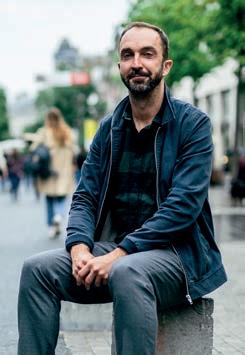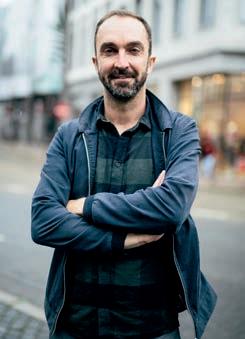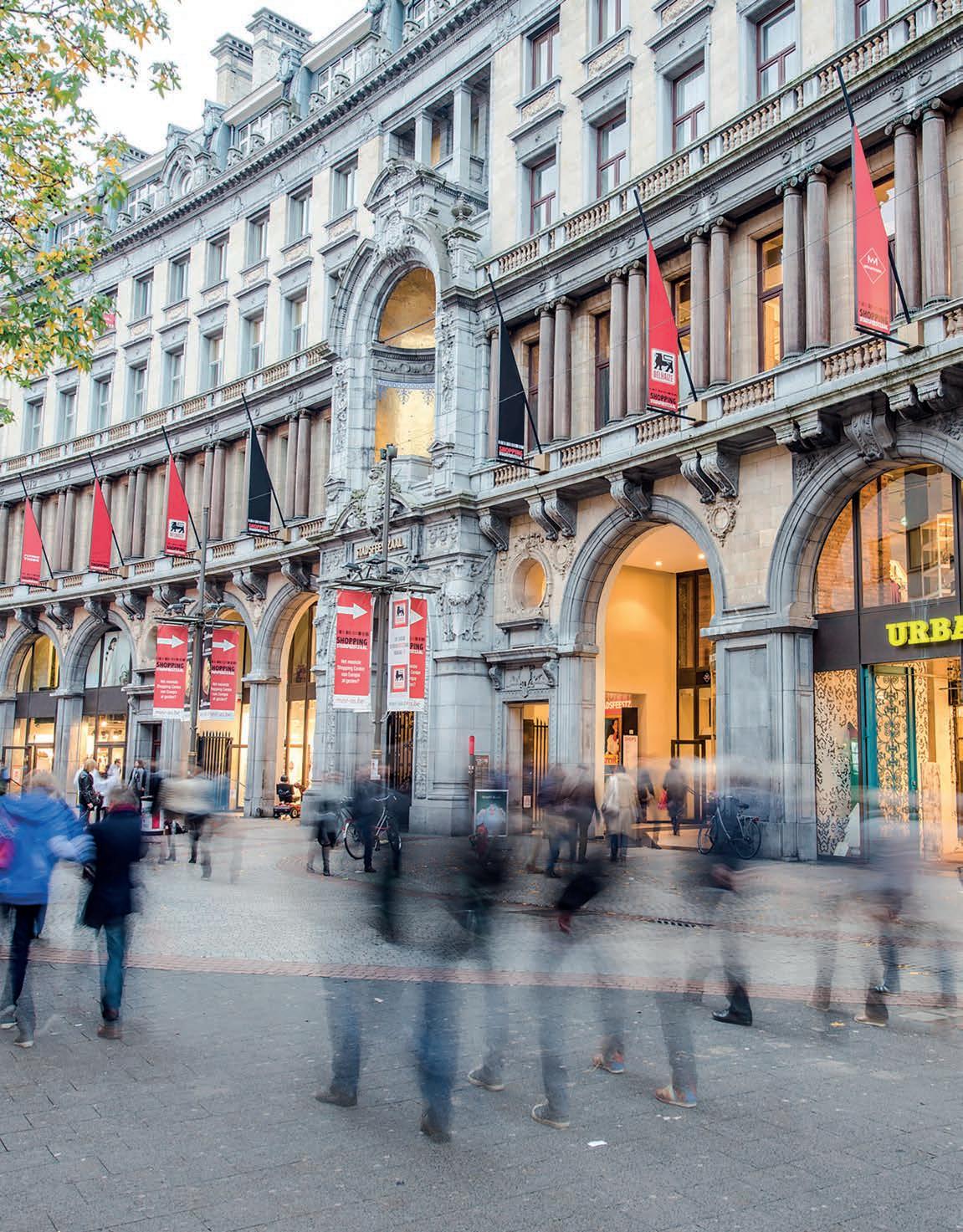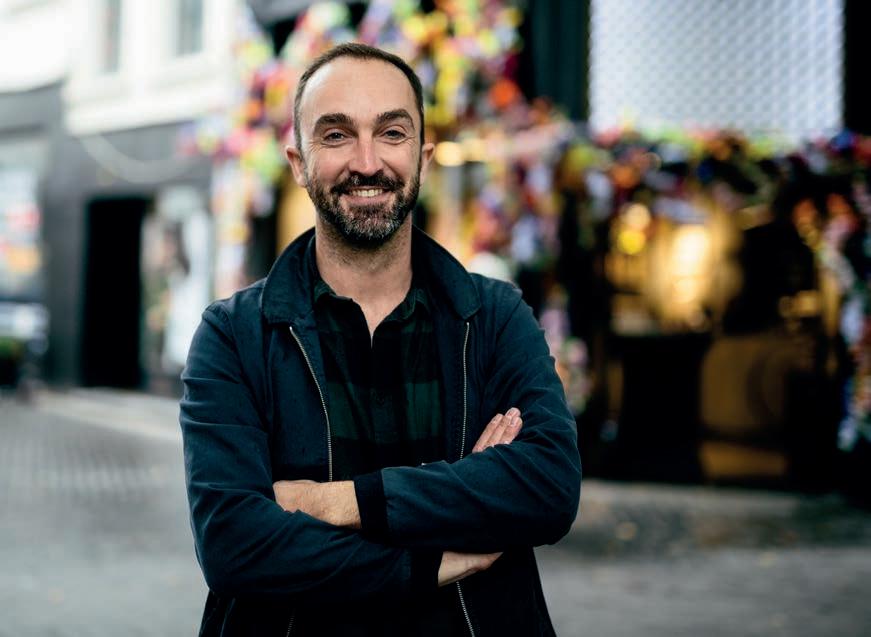
6 minute read
Interview Dries Van Hofstraeten : Retail expert - city of Antwerp

Advertisement

Dries Van Hofstraeten, retail expert - city of Antwerp
Some 10 years ago, the city had centre managers but hardly any data monitoring. My first job was to inventory the retail industry in Antwerp: to gather knowledge and use that to advise on policy about permits, policy plans, opening hours etc.,’ Dries van Hofstraeten explains.
‘Antwerp, Belgium’s number one retail destination, is continuing to build on the Flemish policy lines but plays its own trump cards. In 2013, we developed a city policy plan for retail, which we updated this year. The focus is on keeping Antwerp on the map as a pioneering national and international shopping city. For example, we are seeing that new and innovative shopping concepts are not only electing to conduct a test period in Antwerp, but are actually staying here permanently. As a matter of policy, we are focusing on making the central areas more compact, since we have too many square metres of retail space. Mobility is another consideration. As is the quality of the retail businesses in the local centres, the districts.’
What are the greatest trends at present? ‘Up to 2010, 2012, we saw major growth in the number of retail premises. After that, we saw the supply stagnate and decline, resulting in empty shops. Even Antwerp cannot escape this trend. In places with little future, we ask landlords to include residential use or to bring in a mix of services and restaurants. Some streets are no longer shopping streets where you go to wander. You have to choose shops that are spread out.’ ‘The number of passers-by in central streets is falling as a result of fragmentation, of e-commerce and because we are spending less money on shopping as an activity.
The shopping street as such is disappearing. It is gradually being replaced by a street for all your day-to-day necessities, such as childcare or health insurance. A shoe shop or clothes shop certainly makes little sense in the local centres.
Are you as a city sitting at the table too? ‘We are using big data, pure technology, to make digital maps. For example, we can use WiFi connections to count the number of passers-by. We share those maps free of charge with anyone who has an interest in them, for example estate agents and retail chains. ‘We also talk to retailers to keep abreast of developments. What concepts are they looking for? Maybe we can guide them to the right estate agents. For example, we have noticed that the expansion of fashion shops has stagnated. Some clothing brands still want to come, but they are stumbling over the high rents and the fear of not making much turnover. Often, the landlord has to water down the wine a bit to make the premises affordable. In the past, retailers were queuing up to rent a unit, now it is
the landlords that are having to look for them and adapt their premises. You can see new models emerging, for example, often with an integrated café or restaurant.’ In the food sector, the competition is still strong, even in less obvious locations. The question is how long that can continue. As a city, we naturally want there to be as many shops as possible within walking distance for an entire district.’
How can you ensure a good match between retailers and estate agents? ‘We try to create a direct line. We try to analyse the market objectively and raise awareness. Sometimes, the estate agents need to take a broader view of their portfolios, move away from the purely commercial or residential. Co-working spaces, for example, are a great addition and can attract a lot of people. Sometimes we get requests for locations and we pass these on to the estate agents. Of course, we let the market take its course, but we can and do give advice. We are regularly in touch with a large player like CEUSTERS. They are an interesting party because they have their finger on the pulse on a daily basis, much more than we do.’
Are empty premises the biggest challenge? ‘Empty units cause panic, just think of the media report about Schuttershofstraat. As a city, of course you need to see that signal, even if there is usually a wide range of reasons. Empty premises are a multi-headed monster. The city can start investing again in such a street, but it’s no magic wand. The landlords too need to look at another way to use their properties. For example, if there are restaurants, visitors tend to stick around longer in a street. There is certainly no one-size-fits-all solution. You have to look at each case individually and tailor the policy accordingly.’

FabLab brings bustle to the shopping centre


Empty retail units are one of the most pressing challenges for town centres. The Pieter van Aelst shopping arcade in Aalst devised an award-winning solution. FabLab Factory first moved in in the summer of 2016 and is still bringing added value to the shopping centre and the town.
So clustering is important? ‘We want to avoid wild growth outside the centres and in the peripheries. Out-of-town stores are often poles that cause fragmentation. We do want supermarkets and DIY stores outside the centre, but not clothing stores and retail. It is also indefensible from a mobility point of view.’ ‘The city council dreams of attracting an Ikea or Decathlon to the Meir. People will also come back to the centre to work and live. Brussels has many more o ices in its city centre. You notice that at lunchtime when their sta go out for lunch, to do their shopping, etc... There should be more and di erent types of o ices in our inner city. ‘The Karel de Grote University of Applied Sciences and Arts is also based on the Meir, which means thousands of students let loose on the Meir over lunchtime. Fortunately, landlords are seeing that relying exclusively on the ground floor is a major risk.’
Are you optimistic about Antwerp as a shopping city? ‘Certainly. We also have the demographic. Our population is continuing to grow, and these newcomers have to buy things.’ ‘Everyone is rethinking the retail concepts. There will still be victims in some places. Certainly in the local centres it is not always easy to find a new use for retail premises. On the other hand, there are other centres that are transforming, where empty units are used for o erings that are better geared to the neighbourhood.’ ‘I also see many new urban development projects with plenty of opportunities. And the roadworks will not last for ever. We will become more accessible again.’
A FabLab - short for fabrication laboratory - is a creative workspace with equipment including 3D printers, laser cutters, cutting and printing machines and a whole host of electronics. Most of these FabLabs are found in universities and innovative businesses. ’We were the first shopping centre to create such an experimental space,’ Shopping Center Manager Patricia Verhoeven says proudly. ‘In the walkways we also call it our fabulous laboratory.’
The FabLab is not there to make a profit. ‘It is an open source for students, amateurs and anyone who wants to learn from other people, whether artistic, technical, creative or business. The people behind the project can continue to use the premises as long as they give free workshops on Wednesdays and Saturdays. And they are very successful. Of course, that is also positive for all the other retailers in the arcade, as it generates higher footfall. Moreover, it is a great example of a forward-looking initiative that is helping to shape the new industrial revolution. You don’t come to shopping centres just to shop; you come for an experience and to co-create.’
CEUSTERS has picked up two major international marketing prizes with ‘FabLab - be fab!’. ‘We won silver at the ICSC Solal Marketing Awards organised by the International Council of Shopping Centers, an organisation covering all the world’s professional players with over 70,000 members. It is a real honour and quite a performance, given that, as a small project, we have no marketing budgets yet we are mixing it with the big boys. We also won the CSR prize awarded by the Belgian-Luxembourg association of retail and shopping centres (BLCS).




